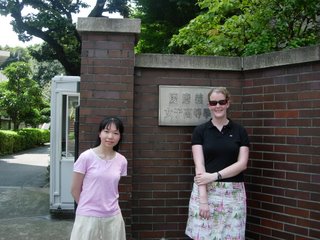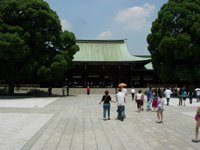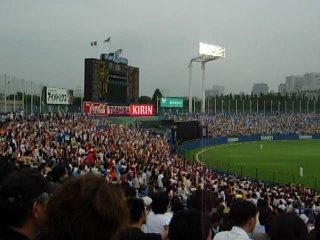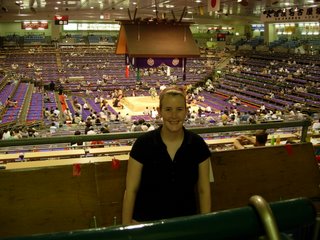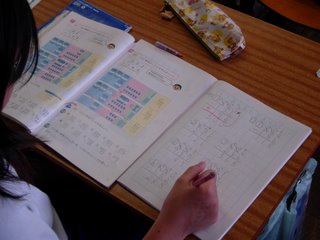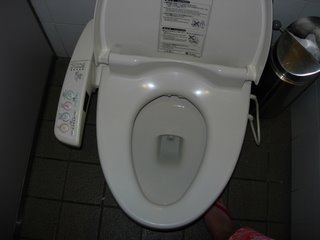
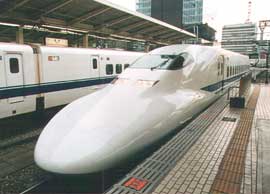
Hi All-
This is my second to last day in Tokyo. Here is a posting about the main cultural differences and benefits of living in Japan as I have seen. Tomorrow I will post about Keio school and University! Very cool! (Read on for why there is a toilet above!)
Cultural Differences (as I see it!):
1. People here take great pride in their work, regardless of what they do. For instance, the people at the Post Office are extremely kind and helpful. I don't think I have had someone help me at the PO in the states since, well, ever. That might be why I still have a pile of packages I want to send to people in my house.
2. The country on the whole seems very educated. I have not had one instance of someone giving me the incorrect change. They do the math extremly fast and accurately! Hooray! I think this also relates to the education system here and more specifically what I observed about the math program. The math from 1-12 does not cover as much material in each grade level. However, it does cover small amounts deeply. The math books rarely spiral back because the skills are already available to the students. I think this is a really interesting way to teach math. I would love to do that in my classroom, but unfortuntaely I think I would not be helping my students as culturally in the US we learn a 600 page book of math each grade level year. But I wonder what would happen if we started to change that. I know that the LS Math team has really focused on what skills we teach in grades 4-6 and how deep we go with each skill. It is an interesting idea.
Also, with education, when you enter Upper School you tend to have a good idea of what you want to do with your life. If you have been successful in school before and have done well in your exams, you will move on to one of the stronger schools. If you have struggled on both of these, you will mvoe onto a technical school where you can gain skills that will apply directly to jobs that you will have when you graduate. Education at any level here is very important and regarded highly. I don't know the drop out rate, but I imagine it is extremely low.
3. The trains. They are AMAZING! They are comfortable, fast and ALWAYS on time. If the schedule says 11:34 am, it actually gets there and leaves by 11:34 am. I think the last time I had an on time Amtrak was, well, never...I think it would be amazing if we had more high speed trains in the US. Also, the interesting thing here is that the trains are not just one company. I think there are 4 companies that run the trains. So there is competition, but to tell you the truth, you really don't know that they are different companies because they all leave from the same tracks and use the same trains. I wonder if Amtrak had competition if they would improve service. Unfortunately, I don't think any companies in the states would want to get into the train industry.
4. Even the metro and buses are on time. I have now been to 6 cities and been on 5 different bus/metro systems and have had to wait for a train or bus once...and it was only 1 minute late. Also, even though I don't read Kana, I can still figure out the buses in all the cities I have been in...I still get on the wrong bus in DC because I can't figure out the schedule...
5. Japan is extremely blind friendly. Everywhere you walk there are these yellow raised bumps on the floor to direct blind people down the street or down the halls of the metro. At crosswalks, there are bumps there to let you know that you have hit a crosswalk. The other day on Japanese television I saw a new device being demonstrated that attaches to the person's cane and reads the bumps for you and tells you what they mean, like if it means there are stairs approaching or you are at an intersection. So cool! I have seen a lot of blind people walking around and I don't know if that is because it is so blind friendly or if it is just because there are indeed a lot of blind in Japan.
6. The cell phones. They are amazing. There is a new cell phone here that lets you flip the screen so that it becomes widescreen. Then you can watch Direct TV on it...are you serious? I can barely get a smiley face on my screen when I text. People all have amazing cell phones. And cell phone charms are huge here...but more about that later.
7. Health care here is free. I am not going to really say more about that.
8. The food here is of course amazing. Things that are huge here that you can expect are things like sushi, noodles (especially ramen) and tempura (especially with cold soba noodles...yum yum yum). Things that I didn't know were big are things like takoyaki (octopus balls), okonomyaki (japanese pancakes), and yakitori (grilled meat on sticks...but weird meat like chicken hearts and "rump"). I have probably gained about 20 pounds...so good.
9. This is the cleanest country ever...especially when you NEVER see trashcans. Apparently, people carry around bags to just put trash in. However, whenever you see a trashcan there is always recycling. Always. No matter where you are in the country they recycle. How amazing is that? And I don't mean in the house, I mean in subway stations, in parks, anywhere. I think it is awesome!
Some funny things about Japan...
1. The TV here is so weird. There are shows within shows all the time. You think you are watching a travel show and all of a sudden it is a game show. Plus, I have watched the same children's show now twice because it teaches toddlers English. I think I will have the "Happy Happy Happy Happy Head Head Head" song in my head for a long time.
2. This one is mainly for my dad because his main views of Japan come from a Simpsons episode. The toilets here are hilarious. In hotels/homes/even some public bathrooms all the toilets have a built in spray and bidet. In public restrooms a lot of the toilets have a built in "noise" feature that simulates the sound of flushing to mask sounds you might be making. The only thing that I really don't like is Japanese style bathrooms in public bathrooms. I have not figured out to use them and probably won't!
3. The "junk food" here is really funny. First off, you can't buy a jumbo bag of chips. I don't think that exists. There aren't really jumbo anything here. Secondly you can get things like chips, pocky sticks, rice crackers, but people also eat dried octopus and squid....ew.
Ok, I have written a lot of things...and sure I forgot some. But I hope this gives you an interesting view of Japan!
